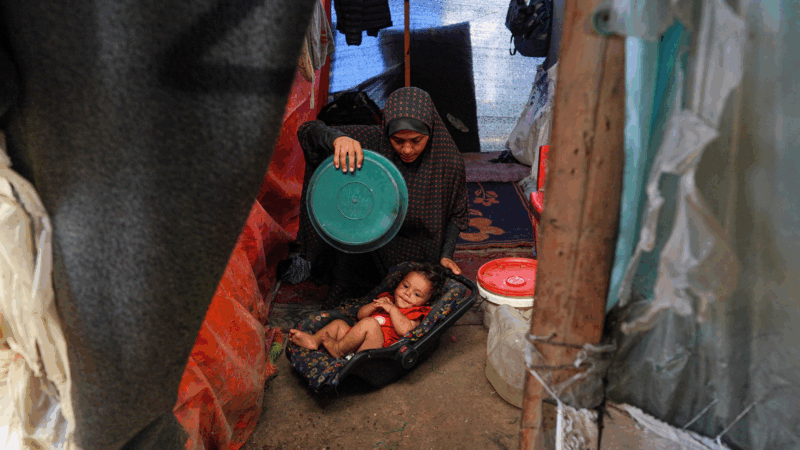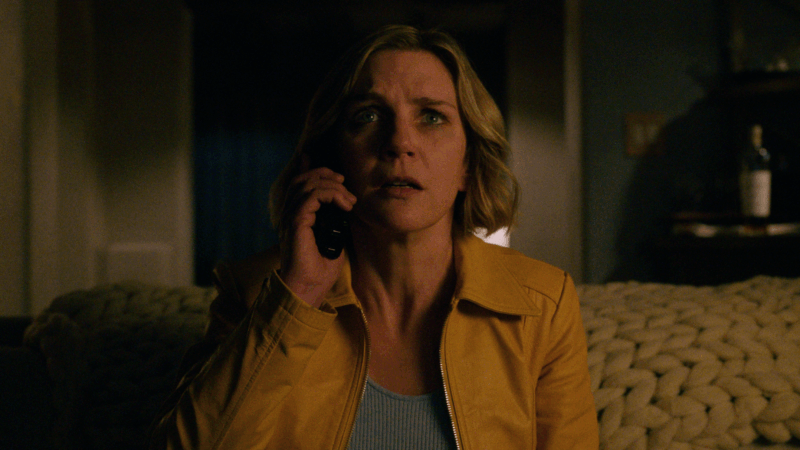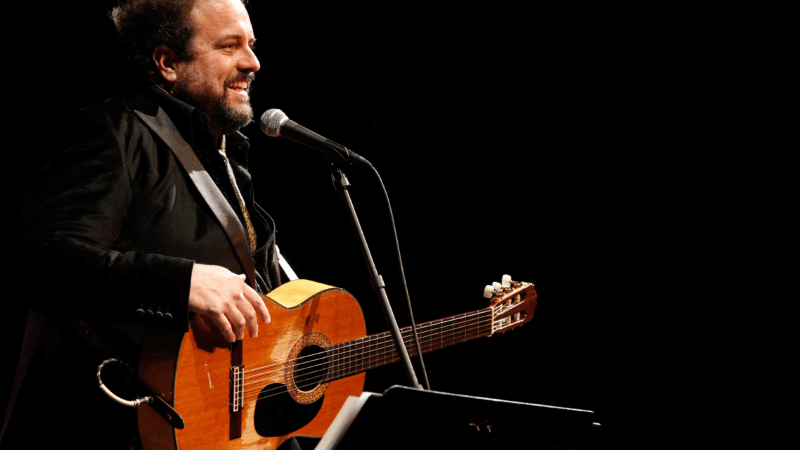The Compassion Experience: A Virtual Exhibit on Global Poverty
Global poverty can seem pretty abstract to the average American. The Compassion Experience aims to change that. This traveling exhibit immerses people in the lives and cultures of children living in poverty around the world. It’s on tour across the South and returns to Alabama next week. WBHM’s Amy Sedlis saw the exhibit on its last Birmingham stop, and has this preview:
On a cold and sunny winter morning, hundreds of visitors, parents, children, and community members armed with iPods and headsets tour the Compassion Experience-a 1,700 square-foot mobile interactive exhibit parked at the Church of Brook Hills in Birmingham. Separate entry doors mark two different stories. Visitors learn about Julian, a little girl who grew up in the slums of Uganda who escapes being more than a beautiful bride for sale or six-year-old Ruben from Bolivia, who together with his mom and sister escape an abusive father.
Inside, a glimpse of the world as it is for these children. Ruben’s voice guides visitors through the Compassion Experience, narrating his family’s journey out of poverty.
A twin mattress sits on the floor, covered with old white sheets and a tattered grey blanket. A narrow hallways littered with trash, dirty rags, and a deflated soccer ball. The rooms around you change with his story, brightening as he finds work as a shoe shine and finally ending in a lime green classroom.
Visitors are moved. Meg Williams from Roebuck brought her four children, ages 3 to 13. She says the experience moved them because of how real it felt. That’s because Rubens a real person, and his true story was painstakingly recreated by people like Nora Beswick, tour manager with the Compassion Experience.
“We go to those places. We take pictures, we take video and then we bring those back and we actually replicate them to make everything look as exact as possible. Even down to the garbage in the alley way. If you look closely at the garbage its garbage from Uganda, garbage from Bolivia.”
Nine year old Elijah Fergenson from Hoover thought “it was amazing.” His younger sister Sara felt sad and wanted to do something. She wanted “to give them stuff to play with-more bibles and some jewelry.”
Aside from making contributors feel good, the question remains: do such efforts have any real impact on global poverty? Dr. Henna Budhwani, deputy director with the University of Alabama at Birmingham’s Global Health Center says thats a hard question and difficult to measure. She cautions, “We do have to be careful because a lot of times these experiences really intrinsically motivate people and they want to go and do good, but international development work and global health work is actually much more complicated.”
Compassion International marketing director Steve Spriggs says the experience works. According to Spriggs, “exit surveys overwhelmingly to the 90th percentile show that our visitors are gaining that extra understanding and are developing better conversations with their children” and, he says, after each tour they are getting new child sponsorships.”
Budhwani encourages people to go through the exhibit, but to do so knowing “that we are not going to solve global poverty and climate change and dirty water and lack of education for young girls and young boys by simply going through an exhibit.”
Compassion International has nearly 7,000 church partners in 26 counties and more than 1.7 million child sponsorships, but what about the huge number of Alabamians living in poverty? Springs suggests people look it as “a both/and instead of an either/or scenario.”
Callie Priest, global coordinator for partnership development at Brook Hills Church agrees. This is the second time the church has hosted the experience, and with over 6,000 attendees, Priest is hopeful for increased sponsorships.
The Compassion Experience will be open to the public February 19-22nd at the Mountain Brook Community Church.
Millions of borrowers in Biden’s SAVE plan would start paying under new settlement
Legal challenges put SAVE borrowers in limbo for months, a time during which they were not required to make payments on their loans. That would change if the proposed settlement is approved.
Rising temperatures could have a chilling impact on young children
A study points to a new concern about the effect that heat can have on young children.
‘Pluribus’ star Rhea Seehorn says no thanks to a world dictated by group think
In the Apple TV series, Seehorn stars as a woman named Carol who suddenly finds herself surrounded by people who are inexplicably happy. The only problem: Carol's not interested in joining them.
Who is Danny Ocean, the pop star playing at the Nobel Peace Prize ceremony?
The 33-year-old singer collaborated with Nobel Prize winner María Corina Machado during last year's highly-contested elections in Venezuela.
Believe it or not, this book makes taxes fascinating
The Price of Democracy tells the history of taxation from colonization to the present day. It's essential reading for anyone who cares about preserving democracy.
Raul Malo, lead singer of The Mavericks, has died at 60
The son of Cuban immigrants, Malo and his band blended country, rock and roll, folk, jump blues, Latin music and Cajun rhythms into a distinct sound anchored by his unmistakable voice.






